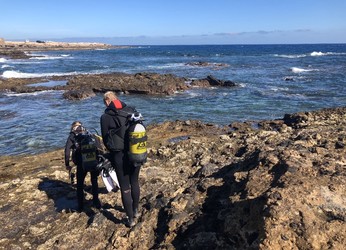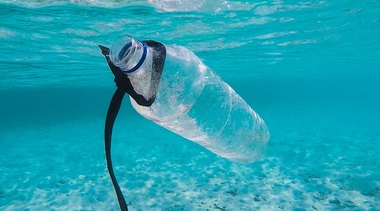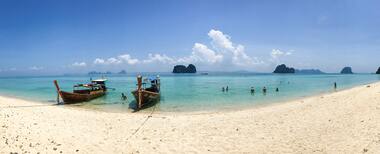Beneath the surface of our planet's oceans lies a world of unparalleled wonder, where ancient shipwrecks serve as artificial reefs and millions of stingless jellyfish create surreal underwater ballets. For underwater photographers and marine enthusiasts, these aquatic realms offer more than just diving spots – they're gateways to extraordinary encounters with nature's most magnificent creatures.
From swimming alongside massive whale sharks in the Maldives to witnessing the ethereal dance of manta rays in the Pacific, the world's premier diving destinations promise adventures that transcend the ordinary. Each location offers its own unique blend of marine life, underwater topography, and seasonal phenomena that make it worthy of any diver's bucket list.
The Bahamas: Shark Encounters and Diverse Marine Life
Spanning across 700 islands in the Atlantic Ocean, The Bahamas stands out as a premier destination for underwater photography and marine encounters. The waters around Tiger Beach, Bimini, Nassau, and Cat Island attract both novice and seasoned underwater adventurers.
October through May brings tiger sharks in abundance, while Caribbean reef sharks frequent the waters year-round. The region's crystal-clear waters host an impressive array of species, including oceanic whitetip, silky, and great hammerhead sharks.
For those new to shark encounters, Nassau's Shark Arena offers controlled conditions with professional guidance. Here, participants can observe Caribbean reef sharks in their natural habitat while maintaining safe distances. The experience requires careful attention to safety protocols and guide instructions, making it an ideal starting point for underwater wildlife observation.
Galapagos Islands, Ecuador: Unique Wildlife and Volcanic Underwater Landscapes
The Pacific Ocean holds a natural wonder where volcanic formations create an otherworldly setting for marine life observation. Hammerhead sharks glide through the waters in schools, while manta rays and marine iguanas add to the distinctive underwater scenery.
The Islands welcome water enthusiasts throughout the year, though June to November stands out as prime time for whale shark sightings. The Galápagos National Park maintains strict guidelines to protect these extraordinary marine habitats and their inhabitants.
Getting to this remote paradise requires flying into either Baltra or San Cristóbal islands from mainland Ecuador. The journey may be long, but the chance to swim alongside unique species in these protected waters makes it worthwhile.
Great Barrier Reef, Australia: World's Largest Coral Reef System
Stretching over 2,300 kilometers along Australia's northeastern coast, the Great Barrier Reef houses thousands of marine species across its vast coral formations. Popular spots include the Ribbon Reefs, Osprey Reef, and the SS Yongala wreck, each offering distinct underwater experiences.
The Australian winter (June to August) presents optimal conditions with water temperatures around 22°C (72°F) and visibility extending beyond 20 meters. During these months, visitors might spot dwarf minke whales, while the summer brings manta rays and sea turtles.
Climate change impacts have affected portions of the reef, prompting enhanced preservation measures. The Great Barrier Reef Marine Park Authority oversees protection efforts, implementing guidelines for responsible water activities.
For the best experience, book multi-day trips to access remote sections, and consider advanced certification courses to access deeper sites.
Palau: Jellyfish Lake and World War II Wrecks
In the western Pacific Ocean, Palau beckons underwater photographers and history buffs alike. The famous Jellyfish Lake houses millions of stingless golden jellyfish, creating an otherworldly swimming experience unlike anywhere else on Earth.
Below the surface, Palau's waters hold remnants of World War II, including Japanese ships and aircraft. These historic sites rest in various depths, offering glimpses into the past while serving as artificial reefs for marine life.
Water conditions reach their peak from November to April, with exceptional visibility for photographing both the jellyfish and wartime remnants. Visitors should note that wreck sites require advanced certification, proper equipment, and careful planning. Local guides recommend booking through established operators who understand the intricacies of these challenging yet rewarding locations.
Cozumel, Mexico: Vibrant Coral Reefs and Underwater Visibility
Crystal-clear waters surround this Mexican island, offering visibility that often extends beyond 30 meters (100 feet). The Santa Rosa Wall and Palancar Reef stand out as prime spots, with tunnels and swim-throughs teeming with angelfish, parrotfish, and sea turtles.
December through April brings the most favorable conditions, with water temperatures around 25°C (77°F). During these months, the gentle currents make it easier to photograph the abundant marine life and colorful coral formations.
The Cozumel National Marine Park maintains strict guidelines to protect the reef systems. Visitors should maintain proper buoyancy control and keep a safe distance from coral structures. Bringing a reef-safe sunscreen and following local regulations helps maintain these pristine conditions.
Before heading out, check your equipment thoroughly and consider taking a refresher course if needed. Many local operators provide gear maintenance services and pre-trip orientations.
Maldives: Manta Rays and Whale Sharks
This Indian Ocean archipelago stands as a premier destination for underwater photographers and marine life enthusiasts. The pristine waters around these islands offer regular sightings of majestic manta rays and whale sharks, creating perfect conditions for remarkable underwater encounters.
May through November presents optimal conditions for manta ray observation, while whale sharks make appearances throughout the year. The warm, crystal-clear waters provide excellent visibility for photographing these gentle giants.
Many luxury resorts feature their own PADI-certified schools, offering courses from beginner to advanced levels. For those seeking remote locations, liveaboard vessels take small groups to secluded spots away from the main tourist areas. These multi-day trips access lesser-known sites where marine life thrives in untouched conditions.
Consider booking during shoulder seasons for better rates while still enjoying favorable water conditions and abundant marine life sightings.
Red Sea, Egypt: Colorful Coral Gardens and Historical Wrecks
The Red Sea's warm, clear waters create perfect conditions for thriving coral gardens and abundant marine life. Sites like Ras Mohammed National Park and the Straits of Tiran showcase endless fields of hard and soft corals in stunning arrays of color.
The SS Thistlegorm, a British merchant navy ship from WWII, rests at 30 meters depth, still carrying its cargo of motorcycles, trucks, and railway cars. The Brothers Islands feature two outstanding wreck sites: the Numidia and Aida, both adorned with coral growth and surrounded by pelagic species.
March through May and September through November offer optimal conditions with water temperatures between 23-28°C (73-82°F). Visibility often extends beyond 40 meters (130 feet), particularly at offshore sites.
Small group tours with experienced guides provide the best access to these historical treasures. Many coastal towns offer accommodation packages that include boat transportation to prime locations.
Sipadan, Malaysia: Diverse Marine Life and Turtle Encounters
Off Borneo's eastern coast, Sipadan Island stands as Malaysia's sole oceanic island, rising 600 meters from the seafloor. The surrounding waters teem with green and hawksbill turtles, creating regular opportunities for close encounters with these gentle creatures.
The protected waters house over 3,000 fish species and hundreds of coral types. Barracuda Point attracts massive schools of fish, while South Point offers sightings of bumphead parrotfish and white-tip reef sharks.
April through December presents optimal conditions, with water temperatures around 26-30°C (79-86°F). Conservation measures limit daily permits to 120 visitors, making advance bookings essential.
Participants must stay on nearby islands, as overnight stays on Sipadan are prohibited. Before arrival, check equipment requirements and permit status through authorized operators. Morning sessions typically offer the best visibility and marine life activity.
Cayman Islands: Stingray City and Wall Diving
The crystal waters surrounding Grand Cayman, Cayman Brac, and Little Cayman attract underwater photographers and wildlife enthusiasts year-round. Stingray City stands out as a signature spot where southern stingrays gracefully glide through shallow, sandy flats, creating memorable photo opportunities.
The islands' underwater topography features dramatic walls dropping to depths over 1,800 meters. Bloody Bay Wall and North Wall showcase abundant marine life, including spotted eagle rays, sea turtles, and reef sharks against a backdrop of black coral and sea fans.
December through April brings optimal conditions with water temperatures around 26°C (78°F) and visibility extending beyond 30 meters. Local regulations protect marine life, requiring specific distances from wildlife and prohibiting touching or feeding except at designated locations.
Visitors should book accommodations in advance during peak season. Many operators provide equipment rentals and photography guidance for capturing the perfect underwater moment.
Fiji: Soft Coral Capital of the World and Shark Diving
The waters surrounding Fiji showcase a spectacular array of soft corals in vibrant purples, pinks, and oranges. These flourishing reefs create an underwater paradise that attracts photographers and nature enthusiasts from across the globe.
The clear waters offer close encounters with bull and tiger sharks in their natural habitat. Professional guides lead small groups to designated spots where these magnificent creatures swim freely among the coral formations.
April through October brings the most favorable conditions, with excellent visibility and calm seas. Many resorts participate in coral reef protection programs, implementing strict guidelines for underwater activities.
For the ultimate experience, consider joining a boat trip to remote locations. These multi-day excursions access lesser-known sites where pristine coral gardens and marine life thrive undisturbed. Pack appropriate gear and verify certification requirements before booking your water adventure.
Embarking on Your Underwater Journey
The world's top diving destinations offer more than just beautiful coral reefs and exotic marine life – they provide windows into complex ecosystems that have evolved over millions of years. Each location presents unique opportunities for underwater photography, wildlife encounters, and personal growth as a diver, making every journey beneath the surface a chance for discovery and adventure.
Whether you're drawn to the historical intrigue of World War II wrecks in Palau or the vibrant coral gardens of the Red Sea, these destinations represent the pinnacle of underwater exploration. By choosing the right season and respecting local conservation efforts, you can experience these aquatic wonders while helping preserve them for future generations of ocean enthusiasts.


